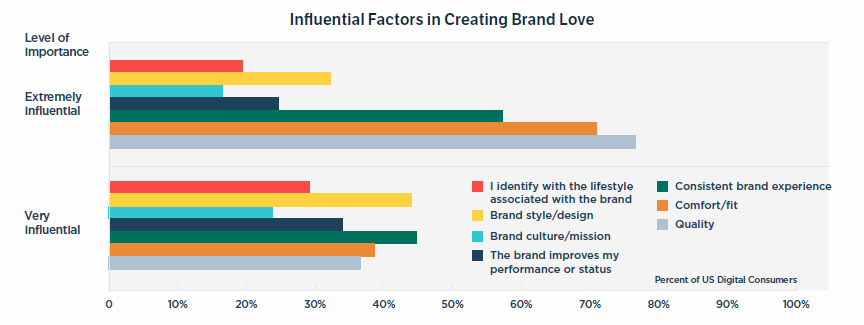Though larger retail stores are currently experiencing major ebbs and flows, the world of e-commerce is on the rise. As a matter of fact, there has been a 23% year-over-year growth in e-commerce sales, and that number doesn’t seem to be diminishing any time soon.
With that rise comes a surge in shipping, and an increased need for retailers to streamline shipping procedures and maintain tight turnaround times to meet customer expectations. Online sellers are getting busier with more demands on time, creating a need for automation to help keep pace with order processing and shipping. One of the primary ways retailers can automate and optimize is by using shipping rules. Also known as mapping, shipping rules allow e-commerce businesses to automate processing orders, which saves time and effort by using if/then statements to build a customized mapping schema based on each company’s unique needs.
Shipping Rules Automate Repeatable Processes
E-commerce is awash with repetition that doesn’t necessarily require human involvement. Creating shipping rules to automate these procedures does more than just give time back into the day. Utilizing automation technology also removes any opportunity for human error in these processes, increasing accuracy and speed, and eliminating the poor customer service experience that could be caused by a mistake. All of this frees up time to focus on running the business.
Shipping rules take the place of repeatable processes by saving frequently-used package settings. If shipping the same type of products within a specified weight range, for example, a Rule can be automatically set up to select certain carrier settings based on those products. In turn, this provides the best rates without taking the time to calculate or compare rates from multiple carriers like USPS, UPS, and FedEx.
Another example of a way to automate a repeatable process is setting up packing slips. If selling across multiple stores, e-commerce businesses can use shipping rules to create unique packing slips for each store. This way, each store’s logo is automatically applied, giving each store’s customers a different experience.
Shipping Rules Increase Personalization
Automation doesn’t mean losing the personal touch. Online retailers can use automated procedures to improve customers’ experiences, without the painstaking work. For example, by using if/then logic, an e-commerce business can add personalized messages and offers to packing slips, confirmation emails, and more, based on purchase history, location, customer lifetime value, and other factors. This creates connections and brand loyalty with customers without adding extra work.
According to eMarketer Retail, 65% of people demonstrate their loyalty to a brand by spending more with that brand, and 61% demonstrate it by recommending the brand to a friend. Automated personalization can pay off by saving time and building business.
Shipping Rules Make Customers’ Lives Easier
The benefits of setting up automation like shipping rules aren’t exclusive to online retailers. Businesses can use them to create shortcuts and benefits for customers, too. Perhaps an e-commerce business has the option to mark something as a gift. They can set an if/then parameter denoting "if marked as gift" to create custom packing slips and confirmation messages that won't give away price information to gift recipients. Small touches like these build important customer affinity.
Recent research from Siegel + Gale shows that 62% of consumers will spend more with a brand that offers them a simple experience. If businesses are consistent with that experience, a recent study from Rakuten Marketing shows that consistency to be one of the most influential reasons customers will love a brand.

(Rakuten Brand Affinity Report: https://blog.marketing.rakuten.com/brand-affinity-report-2017)
Shipping Rules Allow for Further Automation
The limit to setting up shipping rules exists only in the number of conditions available. Keep the rules as concise as possible to avoid overcomplicating the process. Be sure to be cognizant of the order in which shipping rules are set. It’s possible for the rules to conflict or negate one another, which could lead to headaches down the road. Just remember that each order runs through every shipping rule starting at the top of the list, and the last rule that the order matches “wins.”
Making use of shipping rules is one of the best ways e-commerce retailers can increase efficiency, improve customer service and brand affinity, and remove human errors from order processes. Even carriers benefit from it, as they re-deliver fewer packages sent to wrong addresses from human input error.
Automation can be one of the best assets for an online retailer. Investing a little time in setup lets e-commerce retailers get back to focusing on building the business.
Rob Zaleski is Director of E-commerce Marketing at ShippingEasy, which provides e-commerce retailers with the easiest cloud-based shipping, inventory management, and customer management solutions, enabling order consolidation across multiple channels and multiple carriers, including USPS, FedEx, and UPS. At ShippingEasy, Rob creates digital and social media content to educate online retailers and guide them through ways they can grow their e-commerce business.
Click here to return to the Shipping Systems topic page.





![GettyImages-911045162-[Converted]](https://cms-static.wehaacdn.com/parcelindustry-com/images/GettyImages-911045162--Converted-.2298.widea.0.jpg)








